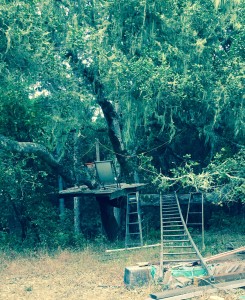
To keep myself honest, I’ll be posting word count and WIP excerpts.
So, yesterday:
Word count – 5k
Hearts of Tabat current word count – 82184
SFWA time – hour and a half on call plus e-mail plus skim thru discussion boards
From Hearts of Tabat, an early chapter, still in rough draft form.
This is what a riot looked like. Pink velvet darkened to plum by spilled punch, and flickers of angry firelight glistening on the sticky surface. Two shattered windows, broken glass spiderwbs in reverse, light from the aetheric lamps hanging over the street outside washing in, acitinic blue white over the parquet floor that had been Benarda’s pride, two hundred and thirty different kinds of wood, each dedicated to a different Trade God, zebra-striped bits of southern wood like dappled petals around her boots, as though she trod on clots of dirt-streaked snow, chips of mammoth ivory salting the petals in tiny white freckles.
A punch bowl, shattered by the first brick that had come in, landing soundly in the middle beside the overturned table, sending punch and bits of curved luster-glass everywhere, a great puddle of liquid changing the colors of the woods beneath them, tinting them dark and rose.
Two paintings askew on the walls, others lying on the floor in a jumble that drew the eye as much as their subject matter, impious and arresting, the torches that had set the rioters outside afire. Someone must have known what the paintings would be like, must have tipped people off, organized the crowd.
There. Marta’s eyes, glittering hate at Adelina across the room. Gods, even now the woman would rather hold her grudge against Bella rather than worry about keeping herself alive.
This is what a riot sounded like: angry shouts coming in through the windows, drowning out the frightened whispers all around Adelina (“Was that Bella Kanto who just went out? Of course I knew she’d be here.) Benarda somewhere behind the scenes, ordering someone else to do something, it was unclear what. The woman’s best chances of keeping her gallery further intact had just walked out the door in order to stand down the crowd, which had grown from the few dozen that had been here when she and Bella had first arrived, immediately after the now-absent Duke’s speech
This is what a riot smelled like: smoke and sweat and alcohol and all the mingled pomades and perfumes ““ who was still wearing vetiver, that went out last season? And what was that intriguing cinnamon and musk blend, was that an actual edge of rum in it or some remnant of the punch?
That was what a riot felt like: Leona’s small fingers in Adelina’s own, Bella’s tiny cousin and the center of all this clamor breathing hard, the gasps and gulps of air she took in when stressed.
Adelina’s own pulse beat fists against the hollow of her throat, pressed tight fingers behind her brows every time the streetlight struck her eyes, hammered at the pit of her belly, unnerving her.







2 Responses
What I’m working on, plus Hearts of Tabat excerpt http://t.co/48QuRfXkni
RT @Catrambo: What I’m working on, plus Hearts of Tabat excerpt http://t.co/48QuRfXkni